SOURCE: RAUNAK KUNDE / NEWS BEAT / IDRW.ORG


Recent reports in Japanese media suggesting that India is keen to join the Global Combat Air Programme (GCAP)—a collaborative 6th generation fighter jet initiative led by the United Kingdom, Japan, and Italy—have been categorically refuted by Indian Air Force (IAF) officials.
Speaking to idrw.org , IAF officials clarified that no formal talks have taken place with Japan, nor has India sought permission to join the program. The statement comes amid speculation about India’s potential involvement in the high-profile multinational project, which is actively seeking additional partners to offset its estimated $32.5 billion development cost. However, the IAF emphasized its unwavering focus on the indigenous Advanced Medium Combat Aircraft (AMCA) program, a 5.5-generation stealth fighter slated for induction by 2035.
Continue readingSOURCE: RAUNAK KUNDE / NEWS BEAT / IDRW.ORG
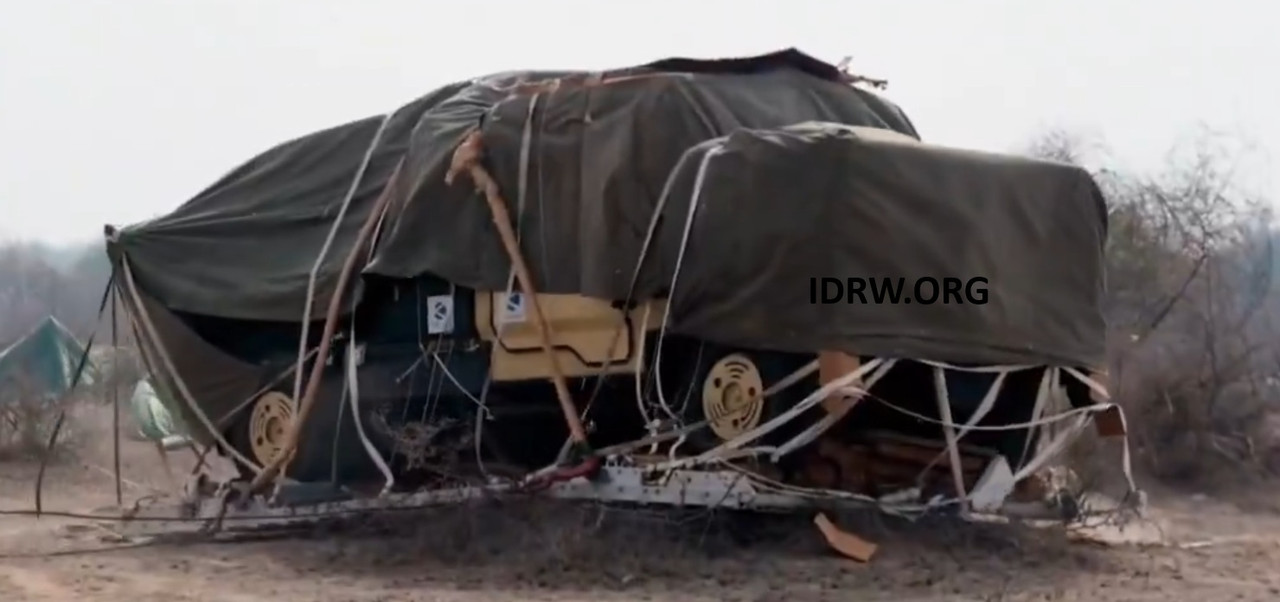

In a significant step toward enhancing the Indian Army’s operational flexibility, the Ministry of Defence (MoD) has granted the Acceptance of Necessity (AoN) for the procurement of the 105 mm/37 Calibre Mounted Gun System (Paradroppable), along with its associated ammunition vehicle. Announced on April 11, 2025, this acquisition aligns with India’s push for self-reliance under the Atmanirbhar Bharat initiative, as the system will be procured under the ‘Buy (Indian)’ category as per Chapter II of the Defence Acquisition Procedure (DAP) 2020.
The Request for Proposal (RFP) for this critical artillery system is expected to be issued by June 1, 2025, setting the stage for a competitive bidding process that prioritizes indigenous design and manufacturing.
Continue readingSOURCE: RAUNAK KUNDE / NEWS BEAT / IDRW.ORG


In a significant development for India’s aerospace ambitions, Rolls-Royce officials have confirmed that the 110kN engine proposed for co-development with India under the Advanced Medium Combat Aircraft (AMCA) program will be an entirely distinct design, separate from the one the company is crafting for its 6th-generation fighter jet program. Speaking exclusively to idrw.org, a Rolls-Royce representative clarified that this engine will be a ground-up creation tailored specifically for India’s needs, with full Intellectual Property Rights (IPR) retained by India. While it may incorporate some technological advancements being explored for 6th-generation platforms, the engine’s technical architecture and thrust parameters will diverge significantly from those intended for Rolls-Royce’s next-generation fighter jet initiatives.
The AMCA, India’s flagship 5.5-generation stealth fighter project led by the Defence Research and Development Organisation (DRDO) and the Aeronautical Development Agency (ADA), demands a propulsion system capable of delivering exceptional performance—supercruise, stealth optimization, and enhanced maneuverability. Rolls-Royce’s offer of a 110kN thrust engine aligns with these requirements, promising a powerplant designed from scratch to meet the AMCA’s unique specifications. Unlike derivative engines based on existing designs, this “clean-slate” approach ensures that the engine is purpose-built for India’s strategic and operational context.
Continue readingSOURCE: AFI


In a bid to expedite the induction of the Advanced Medium Combat Aircraft (AMCA), India’s indigenous 5.5-generation stealth fighter, a high-level committee led by Defence Secretary Rajesh Kumar Singh is working against the clock to finalize a viable production model. The committee, tasked with addressing the financial and logistical challenges of this ambitious program, is expected to submit its report by the end of April 2025, paving the way for accelerated development and deployment of the AMCA into the Indian Air Force (IAF).
The AMCA program, spearheaded by the Aeronautical Development Agency (ADA) under the Defence Research and Development Organisation (DRDO), represents a cornerstone of India’s quest for self-reliance in defense manufacturing. Designed to deliver advanced stealth, supercruise capability, and cutting-edge avionics, the AMCA is poised to enhance the IAF’s combat edge in an increasingly contested geopolitical environment. However, the high costs associated with developing and producing a 5.5-generation fighter have necessitated innovative approaches to ensure the program’s financial viability and timely execution.
Continue readingSOURCE: AFI
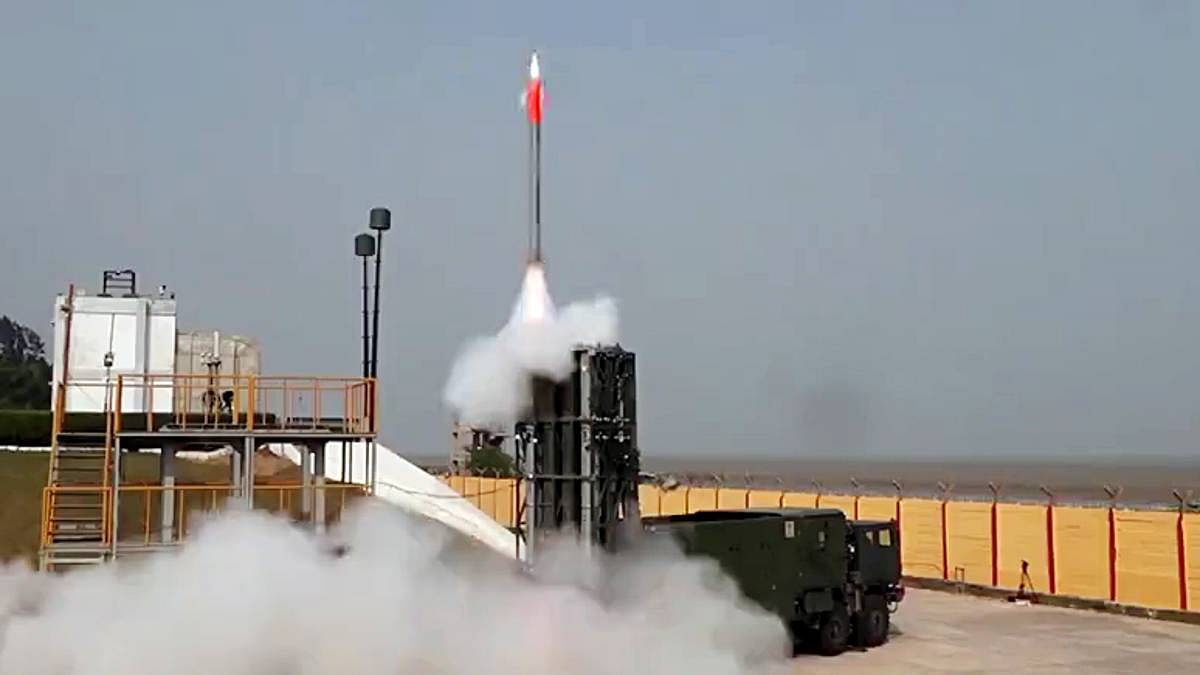

Recent satellite imagery has revealed a significant enhancement to India’s air defense network, with the Indian Air Force (IAF) deploying the advanced Barak-8 Medium Range Surface-to-Air Missile (MR-SAM) system at its Bhatinda Air Force Station in Punjab. This strategic move positions Bhatinda as the latest addition to a growing list of at least 13 sites across India’s northern and eastern sectors equipped with the Barak-8, fortifying defenses along the sensitive borders with Pakistan and China. As regional tensions persist, the deployment underscores India’s commitment to strengthening its multi-layered air defense architecture to counter diverse aerial threats.
The system’s deployment at Bhatinda, a major airbase in Punjab housing fighter squadrons and critical infrastructure, enhances the IAF’s ability to protect one of its largest operational hubs. Located near the India-Pakistan border, Bhatinda’s strategic significance lies in its proximity to Pakistan’s eastern military installations, placing them within the Barak-8’s rapid interception range. This deployment strengthens the air defense umbrella over Punjab, a region vital to India’s military posture in the northwest.
Continue readingSOURCE: AFI


As India continues to modernize its armed forces amid evolving regional threats, the time has come for the country to develop unmanned multi-barrel rocket launchers (MBRLs) firing 122 mm caliber rockets. Such systems, designed with a low battlefield signature and engineered for cost-effective mass deployment, could significantly bolster India’s artillery capabilities while addressing the economic and tactical demands of modern warfare. This need is particularly pressing given the increasing use of unmanned systems globally and India’s own operational requirements along its borders with China and Pakistan.
The 122 mm caliber rocket, widely used in systems like the Soviet-era BM-21 Grad—already in service with the Indian Army—offers a proven platform for delivering high-volume, area-saturation firepower. The Grad, with its 40-tube configuration, can unleash a salvo of rockets covering a wide area, making it ideal for suppressing enemy positions, disrupting troop concentrations, and targeting soft-skinned assets. However, traditional MBRLs like the Grad are manned, bulky, and often emit a significant battlefield signature—through noise, heat, and visual cues—making them vulnerable to counter-battery fire, drones, and precision-guided munitions in today’s sensor-rich battlefields.
Continue readingSOURCE: AFI


Prateek Dhawan, the innovative mind behind DG Propulsion, has introduced a groundbreaking advancement in engine technology: the DG AEMS (Adaptive Engine Management System). Billed as a “multi-fuel, multi-engine, compact, intelligent unit,” this system promises to redefine the future of propulsion technology—and it’s set to be proudly built in India.
Dhawan, who has poured months of relentless effort into this project, describes the DG AEMS as more than just a controller. “It’s the brain behind everything we build next,” he says, reflecting the system’s pivotal role in DG Propulsion’s ambitious roadmap. Designed to manage engines ranging from 10kg to 200kg of thrust—and with scalability for even greater capacities—the AEMS is a versatile, all-in-one solution poised to meet the demands of diverse applications.
Continue readingSOURCE: IANS


Defence Minister Rajnath Singh complimented DRDO, IAF and the industry for successful development trials of Long-Range Glide Bomb (LRGB) ‘Gaurav’ from the Su-30 MKI aircraft, an official said on Friday. The Minister said the development of LRGB will further enhance the capabilities of the armed forces. The Defence Research and Development Organisation (DRDO) successfully conducted the release trials of Gaurav from a Su-30 MKI aircraft.
During the trials held between April 8-10, the weapon was integrated to multiple stations in different warhead configurations, with land target on an island. The trials successfully demonstrated range close to 100 km with pin-point accuracy, said the official.
Continue readingSOURCE: PTI
)

Maharashtra on Friday signed a Memorandum of Understanding (MoU) with Russia’s state-owned company ROSATOM for the development of a Small Modular Reactor (SMR) based on thorium fuel. This is perhaps for the first time a state government will be venturing into the arena of nuclear energy which has otherwise been exclusively under the control of the Department of Atomic Energy.
A senior state government official, however, stressed that any step forward will be taken only after the approval of the Centre.
Continue readingSOURCE: PTI


The Indian Consulate in Melbourne has been targeted in an act of vandalism with the Indian High Commission in Canberra raising the issue with Australian authorities on Friday. The Consulate premises in Melbourne have previously been the site of similar provocations, with slogans defacing the premises in past years during periods of heightened international tension, The Australia Today reported.
Victoria Police said graffiti was discovered at the front entrance of the diplomatic premises around 1:00 am early Thursday.
Continue readingSOURCE: PTI
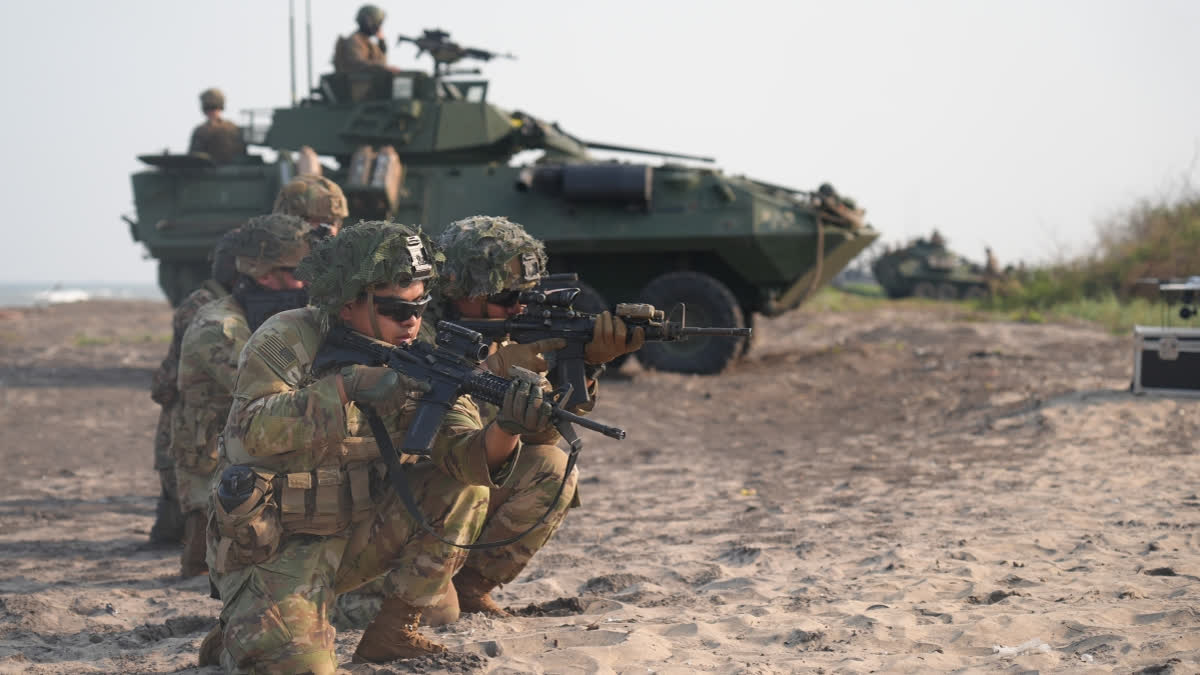

The fourth edition of Tiger Triumph, an amphibious bilateral humanitarian assistance and disaster relief (HADR) exercise between India and the US, reached its final stages here on Friday with large-scale operations training.
As many as 1,000 US and Indian armed forces personnel took part in the amphibious landing drill on Kakinada beach, said a press release issued by the US Consulate in Hyderabad. “Our forces are working closer than ever before, and we see this relationship only getting stronger. It is through exercises like Tiger Triumph that the United States and India achieve mutual security objectives and assure a free and open Indo-Pacific region and beyond,” Jennifer Larson, US Consul General, Hyderabad, said in the release.
Continue readingSOURCE: IANS
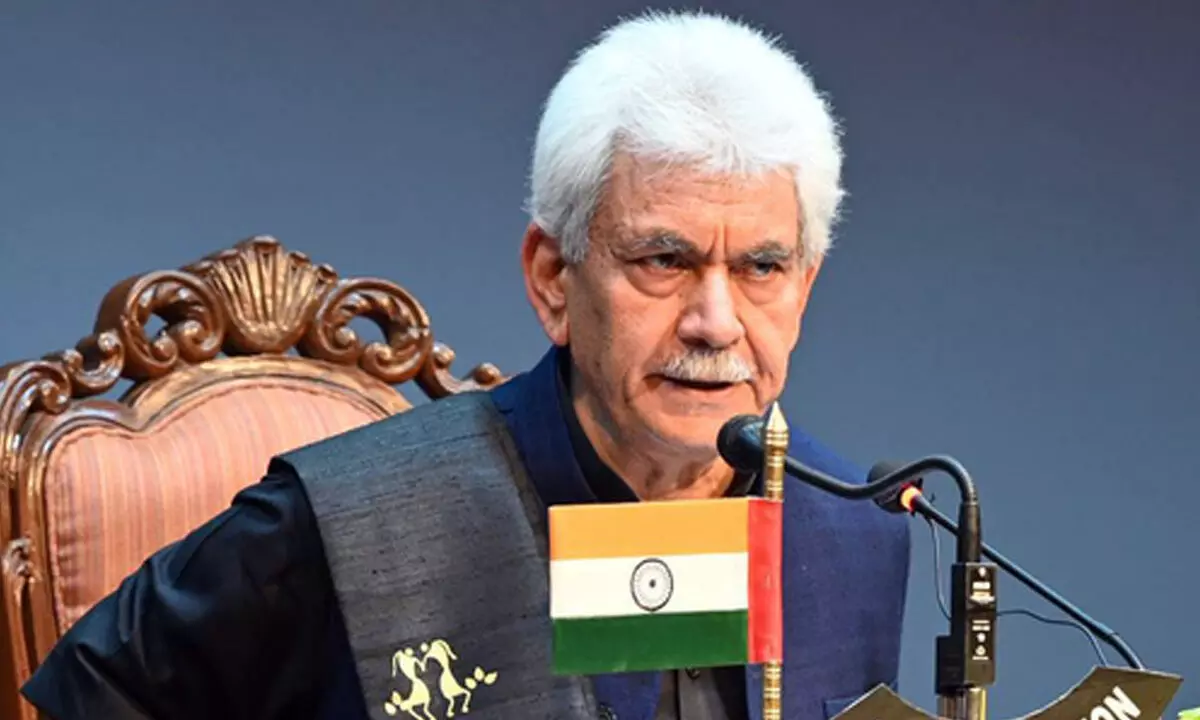

J&K Lt Governor (L-G), Manoj Sinha, on Thursday dismissed two government employees from service for their alleged involvement in “anti-national activities”. The two dismissed employees belonged to the Police Department (Assistant Wireless Operator) and the Public Works (R&B) Department (Senior Assistant). Officials said they were dismissed from government service in terms of Article 311 of the Constitution of India for their “involvement in anti-national activities”.
He said that the activities of the employees had come to the adverse notice of law enforcement and intelligence agencies, as they found them involved in activities prejudicial to the interests of the state, evidencing their involvement in terror-related activities. “Basharat Ahmad Mir, Assistant Wireless Operator in Jammu and Kashmir Police Department, son of Ghulam Mohammad Mir, resident of Upper Brein District Srinagar, was under intelligence radar on the basis of highly credible inputs from agencies that he was in continuous touch with Pakistan Intelligence Operatives,” the official said.
Continue readingSOURCE: ANI
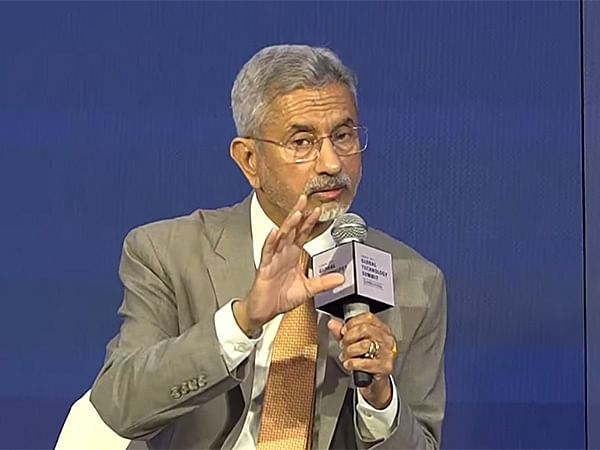

External Affairs Minister S Jaishankar on Friday, while speaking at the 9th Carnegie Global Tech Summit, said that now is not the time to make any determination about DeepSeek. When asked if the government was considering a possible ban on the Chinese AI platform DeepSeek, like the Chinese social media app TikTok, Jaishankar said he would choose to be evasive now.
“I will be deeply evasive about the answer. My honest answer is, I don’t think at this time there is any determination,” he said. Earlier, on February 25, the Delhi High Court refused to advance an urgent hearing on a Public Interest Litigation (PIL) seeking direction to block DeepSeek in India.
Continue readingSOURCE: PTI
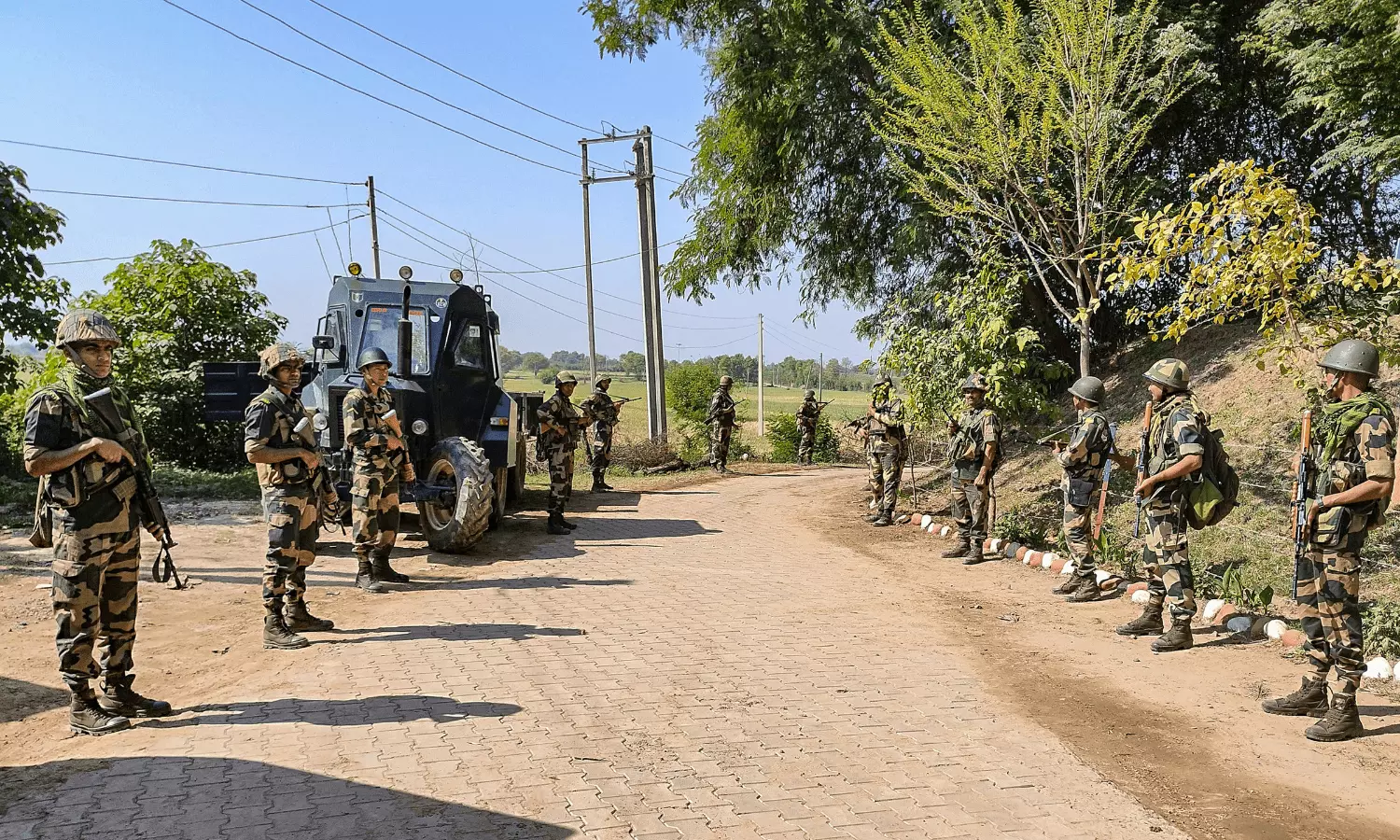

The BSF will undertake an anti-IED sweep along hundreds of kilometres of the India-Pakistan border in Punjab following the first-time recovery of such bombs leading to one jawan being injured, official sources said on Thursday. The force also recently shifted the jurisdiction of about 20.3 kilometres from the total 553 kilometres under its Punjab frontier, headquartered in Jalandhar, to the neighbouring Jammu frontier for “better security coordination” in the riverine areas that run along Pathankot in Punjab.
Pathankot abuts Jammu. The 2,289-kilometre-long India-Pakistan international border runs from Jammu in the north to Punjab, Rajasthan and Gujarat in the west and the Border Security Force (BSF) is tasked with guarding it.
Continue readingSOURCE: ANI


In a significant move to curb terrorist activities and secure critical transit routes, the Indian Army intensified its deployment and surveillance along National Highway 44 (NH-44) to disrupt terrorist logistics, including the transportation of war-like stores (WLS) and unauthorised movement of militants through the region.
Joint Mobile Vehicle Check Posts (MVCPs) have been established at multiple locations in coordination with the Jammu and Kashmir Police (JKP). Advanced vehicle scanners, AI-based Facial Recognition and Identification systems, and Automatic Number Plate Recognition Systems have been deployed at key junctions and entry-exit points.
Continue reading